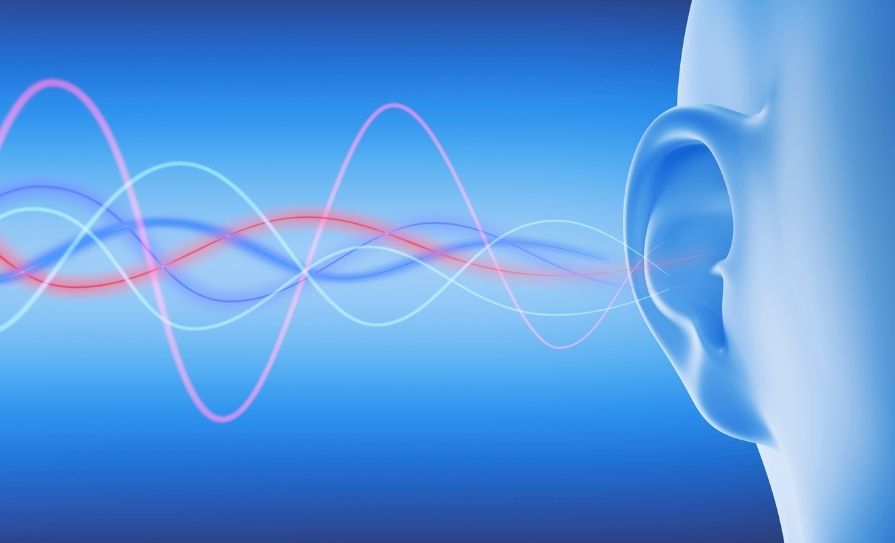Eamonn Brady MPSI looks at the problems caused by excess earwax
Earwax, or cerumen, is a naturally occurring substance produced by glands in the ear canal. It serves essential functions such as trapping dust, debris, and microorganisms, preventing infections, and lubricating the ear canal. However, when earwax accumulates excessively, it can lead to a range of issues affecting hearing, comfort, and overall health. This condition is known as cerumen impaction.
Part 1: Who is affected
Excess earwax, or cerumen impaction, is a common condition affecting a significant portion of the population. Studies estimate that approximately 10 per cent of children, 5 per cent of healthy adults, and up to 57 per cent of older adults experience excessive earwax build-up at some point.
Prevalence by age group
- Children: Around 5-10 per cent of children have impacted earwax due to smaller ear canals and increased wax production.
- Adults: About 5 per cent of healthy adults experience cerumen impaction, often due to improper cleaning habits or excessive wax production.
- Elderly (65+ years): The prevalence rises to 35-57 per cent, as ageing leads to drier and harder earwax, making natural removal more difficult.
- Hearing aid users: Between 60-70 per cent of hearing aid wearers develop earwax blockages, as devices can push wax deeper into the ear canal.
Part 2: Reasons for excess earwax
Overproduction of earwax
Some people naturally produce more earwax than others. Factors such as genetics, age, and hormonal changes can influence earwax production, increasing the likelihood of build-up.
Improper ear cleaning
Using cotton swabs, bobby pins, or other objects to clean the ears often pushes wax deeper into the ear canal rather than removing it. Over time, this leads to impaction, making it harder for the earwax to exit naturally.
Narrow or curved ear canals
People with narrow or uniquely shaped ear canals may have difficulty expelling earwax naturally, causing accumulation. Certain conditions, like exostoses (bony growths in the ear canal), can also block the natural movement of wax.
Ageing and dry earwax
As people age, their earwax tends to become drier and harder, making it more likely to accumulate instead of exiting the ear on its own. This is particularly common in older adults.
Use of hearing aids and earplugs
Hearing aids, earplugs, and earbuds can block earwax from exiting the ear, causing it to build up. These devices may also stimulate the glands to produce more wax.
Environmental factors
Exposure to dusty or polluted environments can lead to increased earwax production as the body works to trap and remove foreign particles.
Part 3: Problems excess ear wax cause
1. Hearing loss
One of the most common issues caused by excessive earwax is temporary hearing loss. When wax builds up and blocks the ear canal, it prevents sound waves from reaching the eardrum effectively. This can result in:
- Muffled hearing;
- A sensation of fullness in the ear;
- Difficulty understanding speech, especially in noisy environments.
For people who rely on hearing aids, earwax accumulation can further reduce hearing clarity by blocking the microphone or speaker of the device.
2. Ear pain (otalgia)
Excess earwax can cause discomfort and pain, particularly when it hardens or gets impacted against the eardrum. This may lead to:
- A persistent dull ache;
- Pressure in the ear;
- Tenderness or soreness, especially when touching the outer ear.
The pain can be mild or severe, depending on the extent of impaction.
In some cases, people may mistake earwax-related pain for an ear infection.
3. Tinnitus (ringing in the ears)
Tinnitus, a condition characterised by ringing, buzzing, or humming sounds in the ears, can be triggered by earwax impaction. This occurs because:
- The blockage affects how sound is transmitted to the auditory nerve.
- Pressure from accumulated wax irritates the eardrum and inner ear structures
People with tinnitus due to earwax build-up may experience a worsening of symptoms until the blockage is cleared.
4. Dizziness and balance issues
The ear plays a crucial role in balance, and excessive wax build-up can interfere with the vestibular system located in the inner ear. This can result in:
- Dizziness or vertigo (a spinning sensation);
- Unsteadiness or loss of balance;
- Increased risk of falls, particularly in older adults.
Severe cases may lead to nausea and motion sickness-like symptoms.
5. Increased risk of ear infections
Earwax helps prevent infections by trapping harmful bacteria and fungi. However, when too much wax accumulates, it can create an ideal environment for bacterial growth, leading to infections. Symptoms of an ear infection due to excess wax include:
- Pain and swelling;
- Redness around the ear canal;
- Fluid drainage (sometimes foul-smelling);
- Fever in severe cases.
Chronic ear infections can lead to long- term complications such as hearing loss or damage to the ear structures.
6. Coughing and throat irritation
Excess earwax can stimulate the auricular branch of the vagus nerve, which has connections to the throat and respiratory system. As a result, impacted wax may cause:
- Chronic coughing;
- A tickling sensation in the throat;
- A feeling of something being stuck in the throat.
These symptoms can be frustrating, especially if the underlying cause is not immediately recognised.
7. Itching and irritation
Some individuals experience persistent itching in the ear canal due to excess wax. This can be caused by:
- Dry or flaky earwax;
- An allergic reaction to the wax itself;
- Irritation from trapped debris or bacteria.
Scratching or inserting objects into the ear to relieve the itching can worsen the problem by pushing the wax deeper or causing injuries.
8. Ear fullness and pressure
Earwax impaction can create a sensation of fullness or pressure in the ear, similar to what is felt during air travel or sinus congestion. This pressure can be uncomfortable and sometimes mistaken for sinus-related issues or eustachian tube dysfunction.
9. Complications with hearing aids and earphones
People who use hearing aids or earbuds are more prone to earwax build-up, as these devices can:
- Push wax deeper into the canal;
- Block natural wax expulsion;
- Cause irritation, leading to increased wax production.
This can result in reduced device performance, frequent cleaning needs, and discomfort for users.
10. Sleep disturbances
Some people with impacted earwax report difficulties sleeping due to:
- Persistent ear discomfort;
- Tinnitus-related sleep disruption;
- Increased sensitivity to internal noises, such as breathing or heartbeat.
Poor sleep quality can affect overall health, leading to fatigue and difficulty concentrating.
11. Headaches
In rare cases, excessive earwax can contribute to headaches, especially if it creates significant pressure against the eardrum or inner ear structures. This can lead to tension headaches or exacerbate migraines in susceptible individuals.
12. Psychological impact
Chronic earwax problems can cause frustration, anxiety, and embarrassment, particularly if hearing loss or tinnitus is severe. Some individuals may experience:
- Social withdrawal due to difficulty hearing conversations;
- Anxiety over persistent ear symptoms;
- Decreased quality of life.
Addressing the issue promptly can help alleviate these psychological effects.
Part 4: Safe methods for earwax removal
If excess earwax causes problems, several safe removal methods are available:
1. Over-the-counter ear drops
Earwax-softening drops, containing hydrogen peroxide, mineral oil, or saline, can help loosen wax for easier removal.
2. Irrigation (ear flushing)
- A doctor may use warm water or saline to flush out excess wax.
- At-home irrigation kits are available, but care must be taken to avoid ear infections.
3. Manual removal by a doctor/audiologist or trained specialist
An ear specialist can use specialised tools like curettes or suction devices to safely remove impacted wax.
4. Micro-suction
A professional procedure that uses a small vacuum to remove wax without water, reducing the risk of infections.
5. Avoiding unsafe methods
- Cotton swabs: These often push wax deeper and can cause damage.
- Ear candling: This alternative remedy is ineffective and may lead to burns or further blockage.
- Sharp objects: Using hairpins or other tools can damage the ear canal or eardrum.
Part 5: When to seek medical attention
You should consult a healthcare provider if you experience:
- Severe ear pain;
- Sudden or significant hearing loss;
- Persistent tinnitus or dizziness;
- Signs of infection (ie, fever, drainage, swelling);
- No improvement after using over-the- counter treatments.
A doctor/audiologist can assess the severity of the impaction and recommend appropriate treatment.
Part 6: What patients can do themselves to prevent excess ear wax
Some of the information below covers what is discussed above but gives further details of what the patients can do themselves to prevent excess earwax.
1. Avoid cotton swabs
Using cotton buds or other objects can push wax deeper into the ear canal, leading to impaction.
2. Use ear drops
Over-the-counter ear drops, containing hydrogen peroxide, saline, or baby oil, can help soften and naturally remove excess wax.
3. Practice good ear hygiene
Clean the outer ear with a damp washcloth regularly but avoid inserting anything inside the ear canal.
4. Stay hydrated
Proper hydration helps maintain the ear’s natural self-cleaning process.
5. Limit earphone use
Frequent use of earbuds can block earwax from exiting naturally, causing build-up.
6. Try ear irrigation
Occasionally flushing the ear with warm water (using a bulb syringe) can help prevent wax accumulation. However, avoid doing this too often.
7. Use oils
A few drops of olive oil, mineral oil, or coconut oil in the ear once a week can help keep wax soft and prevent excessive build-up.
8. Visit a doctor or other specialist for regular cleaning
If you are prone to earwax build-up, consider professional cleaning by an ENT specialist every few months.
9. Be mindful of skin conditions
Eczema or psoriasis can increase earwax production. Managing these conditions can help prevent build-up.
10. Monitor symptoms
If you experience ear fullness, muffled hearing, etc, get it checked out in case excess ear wax is the issue.
Part 7: Situations where excess earwax becomes an emergency
I discussed some of the symptoms below already, but if they are or become severe as described below, quick medical attention is needed.
1. Sudden and severe hearing loss
If earwax completely blocks the ear canal, it can cause sudden hearing loss. While not life-threatening, it can be alarming and may require urgent removal, especially for individuals who rely on hearing aids or have pre-existing hearing impairments.
2. Extreme dizziness or vertigo
Impacted wax pressing against the eardrum or inner ear can disrupt balance, causing severe dizziness (vertigo). If vertigo is intense and accompanied by nausea, vomiting, or falls, immediate medical attention is necessary to rule out other serious conditions like Meniere’s disease or inner ear infections.
3. Severe ear pain and infection
Painful earwax impaction can lead to ear infections (otitis externa or media).
If an infection develops, symptoms like fever, swelling, fluid discharge (pus), and worsening pain may indicate a need for urgent care. In rare cases, untreated infections can spread to surrounding tissues, leading to serious complications like mastoiditis (infection of the skull bone behind the ear).
4. Persistent coughing or breathing difficulties
Earwax pressing on the vagus nerve can cause chronic coughing or, in
rare cases, breathing irregularities.
If someone experiences difficulty breathing, medical attention is needed to rule out other causes.
5. Trauma or injury from unsafe removal attempts
Using cotton swabs, sharp objects, or ear candles can push wax deeper, damage the eardrum, or cause bleeding. A perforated eardrum can lead to sudden pain, hearing loss, and dizziness, requiring emergency care.
When to seek immediate medical attention if you experience:
Sudden or complete hearing loss in one or both ears; Severe ear pain that worsens or spreads; fever and pus-like discharge from the ear; intense dizziness or balance problems leading to falls; headache, swelling, or tenderness behind the ear (possible mastoiditis); bleeding from the ear due to injury.







